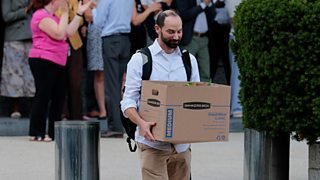U.S. diplomatic job cuts
U.S. diplomatic job cuts more than 1,300 domestic staff and Foreign Service officers, citing efficiency goals tied to an “America First” reorganisation led by Secretary of State Marco Rubio. Critics warn these reductions could undermine U.S. diplomatic strength at a critical global moment.
Source Image: sepe
Read More: Top 5 Costliest Space Missions Launched Across the World
U.S. State Department Announces Massive Layoffs
The State Department formally notified over 1,300 U.S.-based employees—including 1,107 civil servants and 246 Foreign Service officers—that they will lose their jobs. The layoffs began after a recent Supreme Court ruling cleared the way for such mass firings and aim to eliminate inefficient and overlapping roles.
The department hopes to streamline its operations in alignment with the Trump-era “America First” agenda, especially under Secretary Marco Rubio’s guidance. Officials call the cuts part of a broader strategy to focus on core diplomatic functions and reduce unnecessary bureaucracy.
Why Critics Express Concern
Numerous former diplomats and lawmakers argue that the timing could undercut U.S. global influence. For instance, Senator Tim Kaine warned that reducing experienced staff during ongoing crises—such as the wars in Ukraine and conflicts in the Middle East—could “seriously undermine” American interests abroad. Likewise, the American Foreign Service Association described the job cuts as a “catastrophic blow” to U.S. diplomacy.
Moreover, internal confusion has emerged due to staggered termination notices. Some layoffs began rolling out gradually because of system limitations, prompting concern among departing employees. Although the department claims this delay was procedural, disgruntled workers organized “clap-out” rallies at headquarters to bid farewell to colleagues.
What the Layoffs Involve
-
Scope of cuts: Over 1,300 roles eliminated, totaling nearly 15% of the U.S.-based workforce. Affected divisions include civil service and Foreign Service offices focused on aid, energy, human rights, and refugee programs.
-
Voluntary departures: Another 1,600 employees accepted voluntary exit packages in recent months.
-
Transition timeline: Civil service staff will receive 60-day notices, while Foreign Service personnel get 120-day notices before departure.
Strategic and Operational Impacts
By streamlining internal operations, the department aims to free up resources for “results-driven diplomacy.” However, diplomats worry this may reduce U.S. staffing capacity in sensitive regions, including embassies and key offices like refugee and humanitarian programs.
A senior State official defended the move, stating that routine bureaucratic functions were targeted and core policy roles remain intact. Nevertheless, this reorganisation marks the most significant workforce reshuffle in decades.
What Comes Next
As layoffs proceed, the department must manage shrinking morale and the risk of losing institutional knowledge. Meanwhile, staff unions and advocacy groups are pushing Congress to provide oversight and ensure the cuts don’t leave gaps in critical diplomatic missions.















